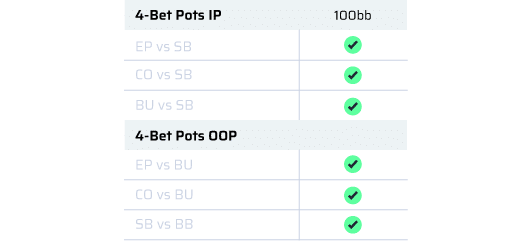Pot Limit Omaha, especially at the mid-stakes level, presents a challenging yet rewarding landscape for poker enthusiasts aiming to enhance their gameplay and strategic approach. The dynamic nature of PLO demands not only a solid understanding of the fundamentals but also an ability to adapt and exploit every possible edge.
This article delves into eight pivotal strategies designed to transform intermediate players into formidable opponents at the PLO tables.
1. Color Coding
Leveraging color coding as a strategic edge can significantly enhance your game selection and provide rapid, actionable insights into an opponent’s play style. While many players may be familiar with this PLO tactic, or even utilize it to some extent, the dedication required to fully integrate it into one’s strategy is often underestimated.
To maximize its effectiveness, it’s crucial to keep the system straightforward, allowing for instant adjustments without confusion regarding opponent tendencies. Assigning a specific color to denote players who are conservative pre-flop—for instance, those frequently overfolding the big blind—can serve as a quick reference to boost your steal percentage.
Although color coding won’t reveal every nuance of a player’s strategy, it establishes a solid foundation for initial decision-making, proving most advantageous in pre-flop scenarios.
2. Note Taking
Delving deeper into the game tree reveals that player behaviors often evolve beyond their pre-flop tendencies, underscoring the importance of meticulous note-taking as a complement to color coding. It’s crucial to maintain concise and decipherable notes to swiftly adapt your strategy mid-game.
For instance, a player initially identified as tight-aggressive based on pre-flop play may exhibit different patterns during later streets. Observing and noting their propensity to double or triple barrel on the turn and river can provide valuable insights. Such detailed records allow you to refine your responses, adjusting your continuation range or raising strategies on the flop to counter their post-flop aggression effectively.
This nuanced approach to note-taking enhances your ability to make informed decisions, adapting to the dynamic nature of player strategies as the game progresses.
3. Minimize Distractions
While it might appear straightforward, minimizing distractions is a skill many players struggle to master. Distractions abound, particularly when you’re playing fewer tables and find yourself with idle time between hands.
Although it’s possible to remain profitable under such conditions, the quality of your play could suffer significantly. Engaging in activities like texting friends or watching videos on the side can lead to missed opportunities—overlooking a marginal value bet or failing to execute a routine bluff, for instance. Such lapses can directly impact your ability to maximize your win rate.
Achieving peak performance in poker demands full concentration, as even seemingly minor distractions can prevent you from making the optimal decisions that lead to long-term success.
4. Strive to Play More A-Game Sessions
It’s critical to align your playing schedule with times when you’re at your peak alertness and focus. Playing when you’re not fully awake or concentrated can hinder your ability to maintain mental acuity and emotional stability, setting you off on the wrong foot.
Cultivate the discipline to recognize when you’re not performing at your best. In such moments, don’t hesitate to take a break or even end the session entirely. Pushing yourself to play additional hours just to increase your volume is counterproductive if you’re not playing effectively.
Adding volume while in a suboptimal state is a strategy that doesn’t pay off, as playing while not at your A-game can lead to unnecessary losses and diminish your overall win rate.
5. Don’t Be Afraid to Deviate
Many of your most lucrative opportunities in poker will arise not from adhering strictly to Game Theory Optimal (GTO) strategies but from strategically diverging from them. With a sharp focus, a commitment to playing your best game, and leveraging detailed notes and color coding, you’ll identify moments where deviating from GTO principles enhances your win rate.
This tailored approach, grounded in a deep understanding of your opponents’ behaviors, exemplifies the dynamic nature of poker strategy beyond the confines of GTO play.
6. Pay Attention to the Stack-to-Pot Ratio
Understanding that your approach must evolve with varying Stack-to-Pot Ratios (SPRs) is crucial, as failing to adapt can lead to numerous negative Expected Value (-EV) situations. A classic mistake occurs when players raise too frequently from the button (RFI) without considering a short stack in the big blind, leading to an excessive number of 3-bets and forcing folds from hands that would otherwise be playable in deeper stacked situations.
Tailoring your strategy to the specific SPR allows for more nuanced and effective decision-making, crucial for maintaining positive EV in a variety of scenarios.
7. Stop Overvaluing AA
Identifying board textures that align with your opponent’s likely holdings is key, and it’s important to resist the urge to overplay weak AA hands in these contexts. Overemphasizing protection is a widespread error, particularly among mid-stakes players. You’ll often observe players committing to a full pot-sized bet on connected and wet boards, a move that generally exceeds the advisable betting range for such situations.
This tendency is especially pronounced on lower boards featuring a flush draw, where players holding AA, along with the flush draw, may instinctively opt for potting. This strategy, however, renders you highly predictable and vulnerable to exploitation, as checking back in these scenarios leaves your range weak, making it easier for opponents to bet into you.
Adjusting your approach to consider the board’s interaction with both your and your opponent’s ranges can prevent such strategic missteps, preserving the versatility and unpredictability of your play.
8. Stop Undervaluing AA
Identifying scenarios where your opponent is likely to miss the flop or struggle to connect with substantial equity is crucial for maximizing your own equity advantage. On board textures where your opponent’s range is at a significant disadvantage, adopting an aggressive betting strategy can be highly effective.
Consider a J42 rainbow flop as a prime example: this is a situation where you should feel comfortable betting a large portion of your range aggressively. The rationale is that your opponent will often find it challenging to proceed with confidence against your high rundowns, enabling you to capitalize on your equity advantage effectively.
Conclusion
In conclusion, the path to excelling in mid-stakes PLO hinges on embracing a comprehensive and adaptable strategy. By applying the insights from these eight key tips, including leveraging player insights through color coding, refining your strategic decisions with diligent note-taking, minimizing distractions, and strategically deviating from GTO when beneficial, you can markedly enhance your gameplay.
Success in PLO requires not just understanding the nuances of each hand but also executing a broader, informed strategy that capitalizes on opponent vulnerabilities. With dedication and a commitment to continuous improvement, these strategies will equip you to navigate the complexities of PLO and secure a competitive edge at the mid-stakes tables.






















